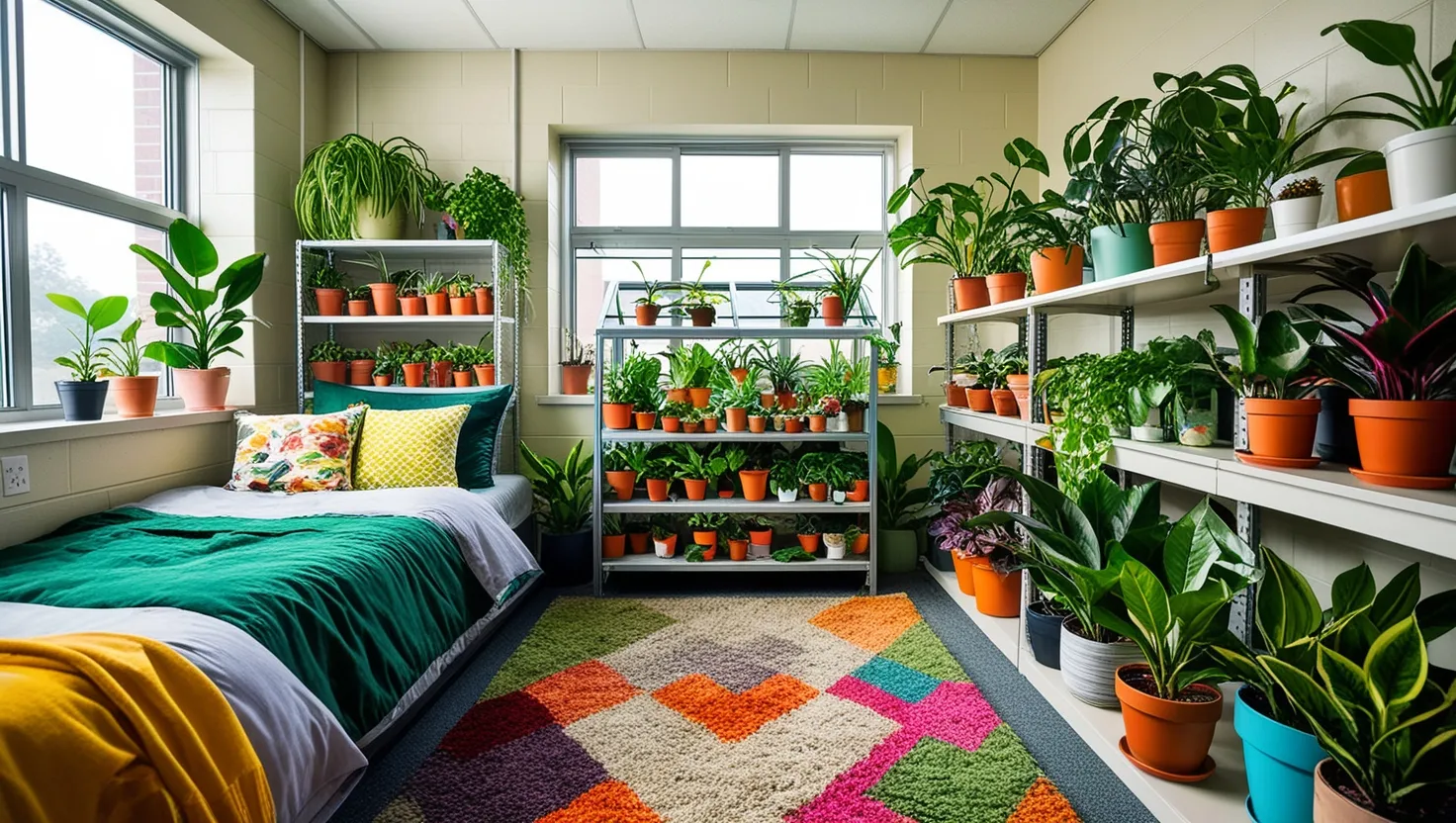In a small college dorm room, an unexpected venture was blossoming. Jasmine, a college dropout, had found a new passion that would transform her life and reconnect her with the very things she had once walked away from: education and the environment. Her journey began with a simple yet profound idea – turning her dorm room into a plant nursery.
The Humble Beginnings
It all started with a few potted plants that Jasmine had brought with her to college. As she tended to them, she realized that her green thumb was not just a hobby, but a potential business. The dorm room, once a space for late-night studying and casual hangouts, was now being repurposed. Shelves were erected, pots were arranged, and a mini-greenhouse was set up. The air was filled with the scent of soil and the gentle hum of growth.
“As we work to create light for others, we naturally light our own way.” - Mary Anne Radmacher
This quote resonated deeply with Jasmine as she embarked on her new path. She was creating something from nothing, and in the process, she was illuminating her own future.
Learning the Ropes
Starting a plant nursery is not a trivial task. It requires a deep understanding of plant care, business acumen, and a lot of hard work. Jasmine threw herself into learning everything she could about plants. She spent hours reading books, attending workshops, and visiting local nurseries. She joined plant societies and nursery groups, where she met other enthusiasts who shared their knowledge and experiences.
One of the lesser-known facts Jasmine discovered was the importance of shade houses. These structures, covered with shade cloth, protect young plants from the harsh sun and extreme weather conditions. It was a crucial investment for her nursery, ensuring that her plants remained healthy and thriving.
Supply Chains and Pricing Strategies
As Jasmine’s nursery grew, she faced new challenges. One of the most significant was managing her supply chain. Where would she source her seeds, soil, and pots? How would she ensure a steady supply of these essentials? She began to build relationships with local suppliers, learning about the intricacies of wholesale and retail pricing.
“Pricing is a delicate art,” Jasmine often thought. “You need to balance your costs with what the market is willing to pay.” She experimented with different pricing strategies, sometimes offering discounts to loyal customers or bundling plants with other products to increase sales.
Sustainable Economics
Jasmine’s passion for the environment was a driving force behind her business. She wanted her nursery to be sustainable, not just in terms of plant care but also in its economic model. She adopted practices like using recycled pots, composting organic waste, and implementing efficient irrigation systems.
“Sustainability is not just about the environment; it’s about the economy and social justice,” Jasmine realized. Her nursery was not just a business; it was a way to contribute to a more sustainable future.
Reconnecting with Education
As Jasmine delved deeper into the world of plants, she found herself reconnecting with her passion for education. She started offering workshops and classes on plant care, attracting a diverse group of enthusiasts. These sessions were not just about teaching people how to grow plants; they were about sharing knowledge and fostering a community.
“Education is the key to unlocking the golden door of freedom.” - George Washington Carver
Jasmine’s workshops became a hub for learning and growth, both literally and metaphorically. She was educating people about plants, but also about the importance of sustainability and environmental stewardship.
Scaling Up
As the business grew, Jasmine faced the challenge of scaling up. She needed more space, more equipment, and more help. She moved from her dorm room to a larger facility, hired a few employees, and invested in automated irrigation systems.
“Success is not final, failure is not fatal: It is the courage to continue that counts.” - Winston Churchill
Jasmine’s courage and determination were tested at every step, but she persevered. She knew that her business was not just about selling plants; it was about creating a positive impact on the environment and the community.
The Bigger Picture
Jasmine’s journey from a college dropout to a successful nursery owner was not just about personal success; it was about contributing to a larger cause. Her nursery became a model for sustainable business practices, inspiring others to follow in her footsteps.
“The earth has enough resources for our need, but not enough for our greed.” - Mahatma Gandhi
Jasmine’s story is a testament to the power of passion and determination. It shows that even the smallest idea can grow into something significant, making a difference in the world one plant at a time.
So, what can we learn from Jasmine’s story? How can we apply her principles of sustainability and education in our own lives? Perhaps the most important lesson is that success is not just about achieving our goals, but about the positive impact we have along the way. As we cultivate our own passions and ventures, let us remember Jasmine’s journey and the difference one person can make.






